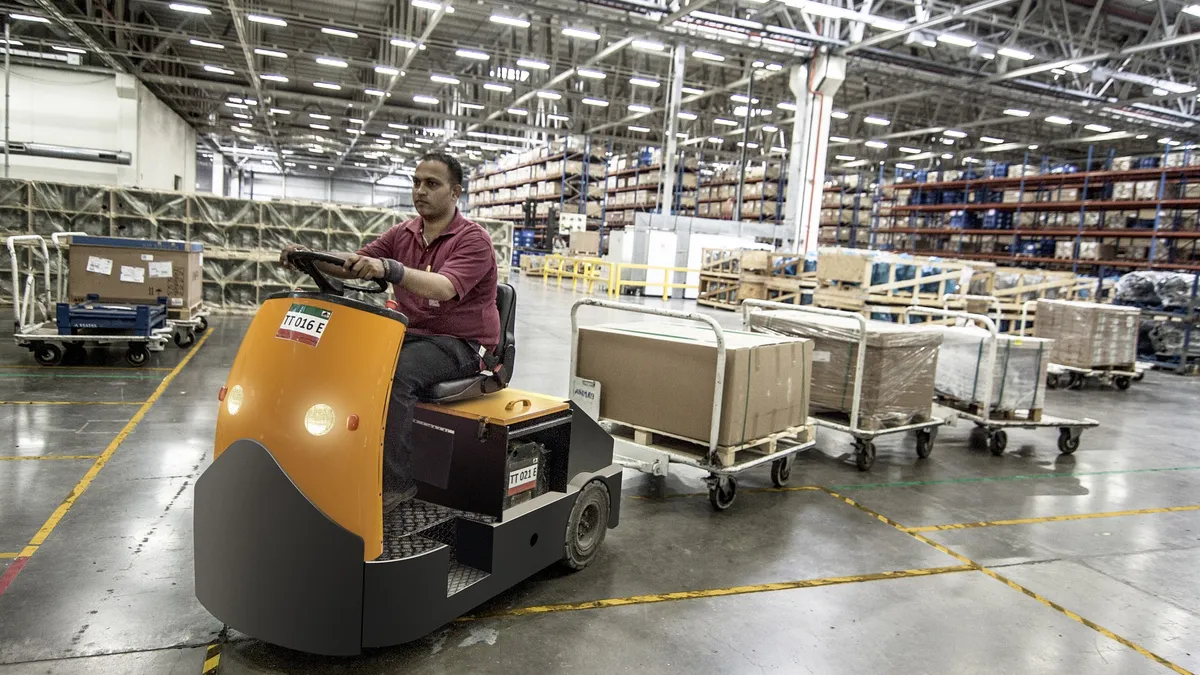With a low unemployment rate and heading into peak holiday season, logistics and warehouse managers are looking for new ways to get workers on the job.
Increasing pay, as Amazon did on Tuesday, is one strategy. But it’s still not enough. So now, managers are turning to a different strategy: changing up the shifts. Doing so, sources say, helps not only lure workers away from other companies, but also attracts labor that was not previously in the workforce because they could not work during traditional hours.
"Today’s traditional shifts are struggling a little bit," said Jennifer Prath, vice president of centralized services at Staff Management in the Chicago area. "There are so many opportunities for companies willing to embrace some change and willing to be flexible with shifts. They’re winning the battle in recruitment efforts."
Who is looking for less traditional shifts?
There are a lot of people not available to work the traditional Monday through Friday shifts. That includes parents and students, and those without cars who rely on public transit. "Those people are underutilized," Prath said. Companies are offering new options, like:
- Job sharing
- Split shifts (early morning and later in the evening shifts, so the employee can work a full-time job traditional shift job elsewhere)
- Part-time shifts, like three nights per week instead of five
- Allowing workers to leave an hour early to pick up children from day care
- Accommodating shift times for transportation issues like bus schedules
"Companies that will allow that are seeing success," Prath said.
Another model that seems to be working is similar to a ride-share model, said Nathan Coin, director of divisional operations-commercial division at Aerotek, a national recruiting and staffing firm. A company sends out a mass text to workers, and the first 100 who respond and show up for a specific shift get the work. "It seems to be effective. They’ve been able to meet demand," said Coin.
"You’re giving the worker what they need for them to be successful in their lives. Flexibility is the incentive."

Jennifer Prath
Vice President of Centralized Services, Staff Management
Adding flexible shifts seems to happen one market at a time. "When one company is struggling in a tighter market and makes a change to shift offerings, we see other companies in that market making it," said Prath.
So far, these flexible shifts can be seen in larger markets like Nashville and Memphis, in Tennessee, Columbus, Ohio, and Allentown, Pennsylvania. Port cities and hubs tend to be more flexible, as well, as there is more demand.
How to find the workers
While advertising traditional and flexible shifts is important, the most efficient way to attract workers is through referrals and social media. "We’re using that to find people who aren’t necessarily looking for a job," Prath said. Referrals help bring out people who don’t realize that some companies can accommodate their schedules.
Staff Management also knows of workers looking for work but not getting it, because some clients with traditional shifts won’t take them. "We’re getting candidates we have to turn away because they won’t fit the traditional shifts," Prath said. Staff Management sometimes tell clients to create different shifts, as they know they have a group of people ready to work.
Shift payment differentials sometimes still exist with flexible shifts, but they aren’t always offered and they may not be the carrot attracting the workers. Even for flexible shifts, pay is still based on the time of day the person is working.
"The more flexible shifts, you don’t have to offer the extra incentives, the additional pay," said Prath. "You’re giving the worker what they need for them to be successful in their lives. Flexibility is the incentive." Giving flexible options of working three days a week instead of five may be more important to the worker than an extra $2 an hour working five days a week.
Across the industry, pay of $1 to $2 an hour more is common for late night and weekend work. When recruiting for additional help, rather than night or weekend shifts, Coin said companies will sometimes offer extra compensation if there’s a short demand window and a high need.
The challenge of flexible shifts
While flexible shifts are becoming more common, traditional shifts are not going away.
If certification or training is needed, full-time workers with that certification tend to work more standard shifts. "Many companies are addressing flexible schedules with people that don’t have those certifications or advanced training," Coin said.
The flexible shifts, meanwhile, work best for a more general labor force, said Prath. Highly-skilled workers will take longer to hone their skills and get up to speed if they work fewer hours. For seasonal opportunities with pick-and-pack general warehouse work, the less traditional hours can work well.
Still, managing flexible shifts can be more difficult, according to both Prath and Coin. Communication is key, they say, especially with additional shift options. The assigned manager should attend any pre-shift stand-up meetings, to share information with those not attending.
"There are so many opportunities for companies willing to embrace some change and willing to be flexible with shifts. They’re winning the battle in recruitment efforts."

Jennifer Prath
Vice President of Centralized Services, Staff Management
If a warehouse manager does not have the buy-in from supervisors and other workers, "it can get tricky," Prath said. But if production and floor supervisors can accept seeing different people working on Monday than on Tuesday, the warehouse can make it work.
Regardless of whether a facility is using traditional or flexible shifts, a logistics company must stay enough in front of the hiring to make sure they can give advanced notice to the current workers, candidates or agencies, so the right number of people will be available when needed.
Running warehouses is more elaborate than in the past, after all. "There are more moving parts to the way that business is being done now," Coin said.





















